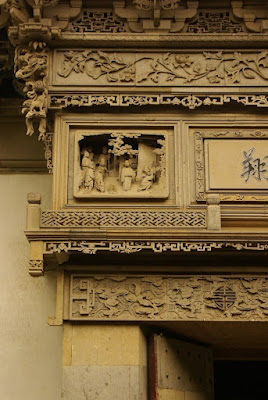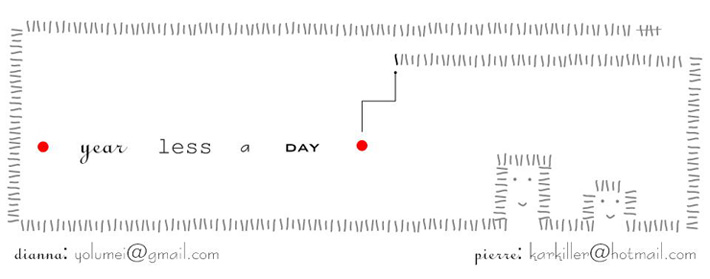Our first impression is not that great. The train goes past some decidedly un-scenic cityscapes of dusty and unused land lots, as well as row after row of both run-down and up-and-coming apartment blocks. So far, we haven’t seen any evidence as to why it once had the reputation of one of China’s most beautiful cities (this was around Marco Polo’s time) and why old Chinese proverbs refer to it as a paradise on earth.
A lot of its reputation, then and now, comes from its gardens. There used to be hundreds, now there are just a few remaining, but they’re in excellent shape. Some are hundreds of years old.
We start off with the North Temple Pagoda.
 We’re a little temple/pagoda weary at this point, but at the very least on a hot day a temple is often a nice cool place to enjoy the shade...
We’re a little temple/pagoda weary at this point, but at the very least on a hot day a temple is often a nice cool place to enjoy the shade...
This temple offers a few added bonuses: a lovely bicycle still-life...

…and a double-header of bad-English signage for our collection:


(The first warns of low ceilings, while the second warns that the floor can be slippery.)
We have two gardens on our list – first we head to the Humble Administrator’s garden in the north-west corner of the city center. It’s from sometime in the 1500s and is the largest one left in the city. We walk around all five hectares of it (I believe that works out to about 50,000 square metres) past manicured gardens and ponds…


…and buildings intended for drinking tea, watching theatre and looking at the moon:

...and about 25 or so points of interest, in addition to it being really hot and humid and our 5th walking, so we’re pretty tired. Pierre wants a picture of me in the doorway; I’m feeling frumpy and tired – here’s the compromise:

The second garden - Garden of the Master of the Nets - is about a 30 minute walk away, and we trudge over to check out this much smaller garden. It's originally from the 1100s, but it gets its name from its 18th century owner who decided to take up fishing after he retired from the government.
During our last few trips, I’ve wondered how some of the site fared during the Cultural Revolution , and why some locations survived at all. The Red Guard were especially thorough about eradicating the “four olds” (“old customs, old culture, old habits and old ideas”) during their rampage across the country in 1966, and even in the years afterwards it was often "out with the old" to make room for the new.
At this garden we get a hint of how things worked out in some places. When we enter the first building of the Garden of the Master of the Nets, we are right behind a group of North Americans whose tour guide begins with a story about the Cultural Revolution.
She says that the garden's groundskeepers at that time realized that it would be targeted quickly and that many things would be destroyed if they didn’t find a way to protect them. Some things could be hidden or buried, but there still remained the problem of the larger items, and the lack of time to get things out. In the end, the groundskeepers took newspapers and posters with Mao’s image and glued them all over whatever they could. At that time, the cult of Mao was at its peak and doing anything to harm or destroy Mao’s image was very taboo (punishable by death, I believe). So, when the Red Guard arrived, there wasn’t really much they could do – destroying the artifacts would mean destroying or defacing the Mao images they were covered with. In the end, the things were left alone.
As a result, some things, like the clay carvings at the entryway seem like they might be fairly new, as part of the ongoing restoration of the place…



The garden covers a small space but is organized in such a way that it feels much larger and it takes over an hour to walk around the entire area. By the time we catch the train back to Shanghai we're pretty knackered. We top off the night with a dinner of Indian food at the lovely, amazing and incrediby tiny Kaveen's Kitchen , and then bus/fly/bus our way home on Day 212.




No comments:
Post a Comment